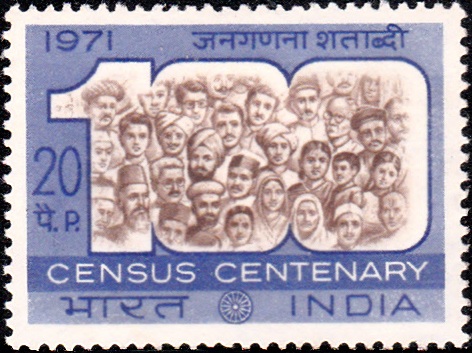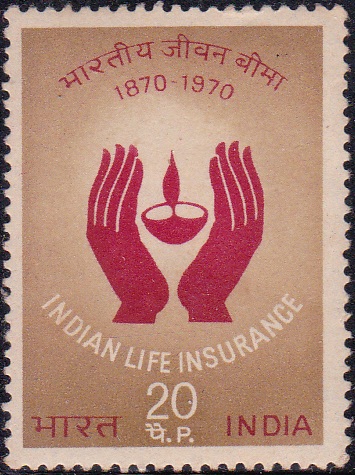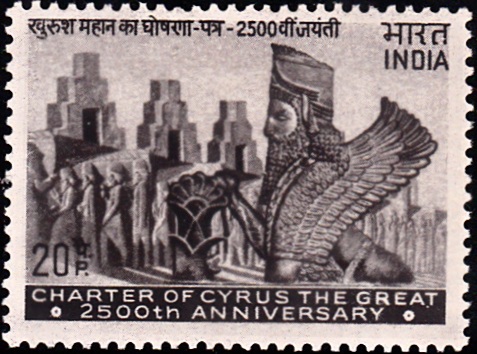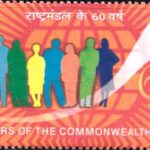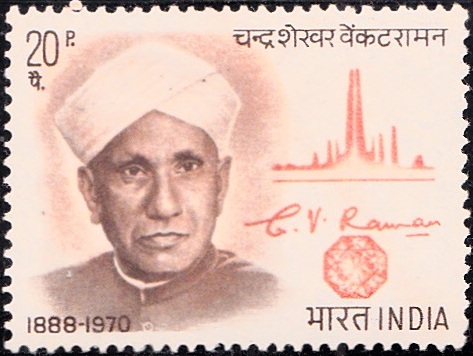
Indian Census Centenary 1971
A commemorative postage stamp on the 1971 Census of India :
Issued on Mar 10, 1971
Issued for : The Posts and Telegraphs Department is happy to associate itself with the centenary of the regular decennial census in India by issuing a special postage Stamp to commemorate the 1971 census. This stamp is dedicated to the vast army of enumerators who are responsible for the census and to the people of India without whose cooperation in this national undertaking, the task of enumeration will not be possible.
Description of Design : The design of the stamp is horizontal and depicts a cross section of the people of India within the figure one hundred, representing the census centenary.
Type : Stamp, Mint Condition
Colour : Maltese Blue and Dark Brown
Denomination : 20 Paise
Overall Size : 3.91 X 2.90 cms.
Printing Size : 3.56 X 2.54 cms.
Perforation : 13 x 13
Watermark : Printed on unwatermarked Adhesive stamp paper
Number Printed : 30,00,000
Number per issue sheet : 35
Printing Process : Photogravure
Designed and Printed at : India Security Press
About :
- The first comprehensive population census of the country was completed in 1871-72, and thereafter a regular chain of decennial enumeration was established. And now, 1971 marks the completion of hundred years of regular decennial census taking in India and the census enumeration commences on the 10th March, 1971. India accounts for more than one-seventh of the population of the world and its census is, therefore, of particular significance.
- The Indian population census is one of the largest administrative operations in the world, in which more than a million honorary workers are trained and engaged on census enumeration duties. It is an operation in which the Central and the State Governments, local bodies and the people function in closest co-operation on voluntary basis, symbolising the identity of interest of all concerned in the success of this national venture.
- Notwithstanding the vastness of the country, the immense size of its population, the inaccessibility of several areas and major political changes and even in the face of world wars, India has always taken the national stock-taking through the census in the first year of every decade since 1871 and built a rich tradition which has won the Indian Census the reputation of being the richest single source of information about the country.
- In India, the collection of population statistics as a measure of State policy was recognised as early as the third century B.C. as one finds its mention in Kautilya‘s ‘Arthasastra‘. The word ‘census’ is of Roman origin derived from the ‘censors‘ or the magistrates in ancient Rome who prepared a register of population for the purpose of taxation and conscription to the military services. The objectives of ancient censuses being unpopular with the people, censuses were almost given up in the medieval period. But, as the need for reliable data on population was felt by the modern welfare States for such purposes as demarcation of electoral areas, scientific and developmental planning and administration and educational, health and other social welfare programmes, the censuses in modern sense of the term were started to be taken from about the seventeenth/eighteenth centuries. In India, the East India Company made estimates of population of some of its local possessions in the middle of the 17th century. The first Indian Census, though termed as the 1871 Census, was a compilation of enumeration spread over till 1872, and may, therefore, be called non-synchronous. It, however, had a uniform schedule and did encompass the basic demographic, social and economic characteristics and thus laid the foundation of decennial censuses in the country.
- Since the dawn of Independence and the commencement of the planning era, the census operations in India were geared to the production of much needed data. Efforts have been made to introduce more and more sophisticated techniques of collection and processing of data to meet the growing demand for a variety of population statistics.
- Census is not a mere counting of heads, but involves the collection of several demographic, social, cultural and economic characteristics of every individual which are all compiled and presented in the form of meaningful tables for the consumption of data-users. It has also been collecting data on housing and establishments. The Indian Census has the tradition of producing analytical reports and organising other ancillary studies to enrich the census statistics. The year, 1961, saw the introduction of Conventional machines to process census date, though partially. It is a matter of satisfaction that the 1971 Census figures were being tabulated through electronic computers to produce major portion of the census accurately and in time.


